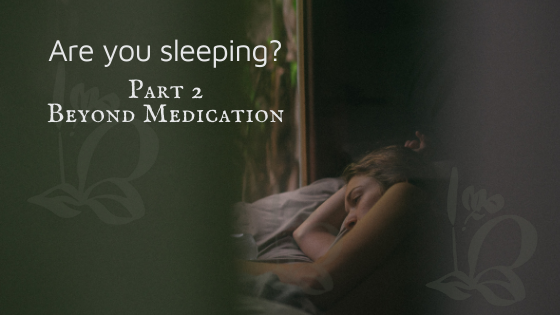Are you Sleeping? Part II
The first post in this three part series talked about the western view on types and classifications of insomnia. So this blog, like I promised, I am going to touch on how western medicine treats insomnia, specifically options other than medications. I think that we all know the typical western way of thrusting a pill bottle at you so, let’s take a look at other options outside of that. The two options I will preview in this blog are cognitive-behavioral therapy and neurofeedback.
In my research, it seems like specialized cognitive-behavioral therapy is the most talked about way of non-pharmaceutical intervention for insomnia. Within CBT there are various methods that are employed. They can be things like sleep restriction, stimulus control, cognitive therapy, sleep hygiene and relaxation training. Treatment using CBT may use one or more of these practices in the treatment plan depending on what your Dr decides is needed or best for your specific condition. So let's just take a quick peek at each of these techniques.
Sleep Restriction
Sleep restriction involves limiting the amount of time spent in bed to the amount of actual total sleep time, which is typically figured out by doing from 1 to 2 weeks of sleep diary work. Sleep restriction systematically reduces time in bed to a degree that is less than to what you are accustomed and uses your innate drive for sleep to increase sleep consolidation. Regardless of total reported sleep time, total time in bed is not typically recommended to be less than 5 or 5.5 h, and under certain circumstances that are not discussed here, the time in bed may need to be modified to address safety concerns. Sleep restriction therapy is effective because it strengthens the sleep and wake system that is controlled by our natural circadian pacemaker.
Stimulus Control
The main goal of stimulus control is to limit the amount of time spent awake in bed and re-associate the bed and bedroom with sleep to regulate sleep-wake schedules. This may include the things like 1) only going to bed when sleepy; 2) using the bed and bedroom only for sleep and sexual activity; 3) leaving the bed and bedroom if unable to fall asleep for longer than 15 to 20 minutes, and return only when sleepy; and 4) keeping a fixed wake time in the morning every day, which will help the patient acquire a consistent sleep and wake rhythm.
Cognitive Therapy
The idea behind cognitive therapy is to address dysfunctional beliefs and attitudes that serve to maintain insomnia. Worrying, faulty attributions, or unrealistic expectations of sleep may lead to increased emotional distress and thus lead to additional sleep disturbance, causing a vicious cycle.
Sleep Hygiene
Although there isn’t enough evidence for sleep hygiene to be an option for single therapy, it is usually provided in conjunction with other things. Sleep hygiene consists of recommending a variety of behaviors and tending to environmental factors (e.g., light, bedroom temperature) that are conducive to sleep. Examples of sleep hygiene instructions include avoiding heavy meals close to bedtime, limiting caffeine products throughout the day, avoiding alcohol to aid sleeping, avoiding smoking close to bedtime, avoiding naps during the daytime, and avoiding vigorous exercise close to bedtime.
Relaxation Training
Relaxation training is exactly like it sounds. Learning relaxation techniques can be effective in reducing physiological hyperarousal in the patient. Common relaxation techniques include progressive muscle relaxation, which involves alternately tensing and relaxing different muscle groups in the body; deep breathing techniques; body scanning, which involves focusing on a body-part sequence that covers the whole body; and autogenic training, which involves visualizing a peaceful scene. Use of mindfulness-based therapy for insomnia, which is based on mindfulness meditation, guided imagery, and biofeedback, can also be incorporated into the treatment.
Another therapy that I discovered that is different then the cognitive behavioral therapy is called Neurofeedback. Neurofeedback is a type of biofeedback that uses real-time displays of brain activity to teach self-regulation of brain function. Neurofeedback and conditioning translate to improved brain performance, normalized behavior, and stabilized mood and overall well-being. By promoting improved self-regulation of the brain, neurofeedback encourages the patient’s brain to normalize sleep patterns, resulting in more regular and restful sleep. The treatment basically feels like you are playing a game. You sit in a comfy chair with a special brain hat and watch videos of that you then concentrate on and respond to and are then visually rewarded depending on the brains response.
Take heart! Speaking from experience I know how miserable it is not to sleep or not sleep well and from my brief surf of the web and research, there are options out there to work on treating your sleep problems that don’t involve medications.
And don’t forget there is always Acupuncture !!

